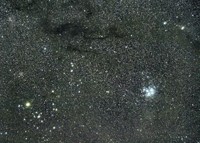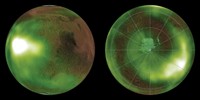Advertisement
Grab your lab coat. Let's get started
Welcome!
Welcome!
Create an account below to get 6 C&EN articles per month, receive newsletters and more - all free.
It seems this is your first time logging in online. Please enter the following information to continue.
As an ACS member you automatically get access to this site. All we need is few more details to create your reading experience.
Not you? Sign in with a different account.
Not you? Sign in with a different account.
ERROR 1
ERROR 1
ERROR 2
ERROR 2
ERROR 2
ERROR 2
ERROR 2
Password and Confirm password must match.
If you have an ACS member number, please enter it here so we can link this account to your membership. (optional)
ERROR 2
ACS values your privacy. By submitting your information, you are gaining access to C&EN and subscribing to our weekly newsletter. We use the information you provide to make your reading experience better, and we will never sell your data to third party members.
Astrochemistry
Carbon monoxide molecules can dance
When they meet in just the right way, molecules will spin in place and keep going
by Sam Lemonick
July 19, 2020
| A version of this story appeared in
Volume 98, Issue 28

When atoms or molecules collide, scientists expect them to bounce off one another like balls on a pool table. Not so when two carbon monoxide molecules meet in just the right way: they square dance instead. Using computer simulations, David H. Parker of Radboud University. and colleagues found that if the molecules meet carbon-to-carbon with a collision velocity of about 800 m/s, the two molecules will rotate in place, propelled by the oxygen atoms’ interaction as the molecules turn their “backs” to each other, before each continues on its original trajectory (Science 2020, DOI: 10.1126/science.aan2729). The motion looks quite similar to a dosi- do, in which square dancers circle each other back to back. The effect is to turn the molecules’ forward momentum into rotational energy. Parker says the behavior happens only in about 1 of 20 collisions, but existing models don’t account for it. In interstellar space, CO molecules are likely to emit that rotational energy as light, which is captured by the telescopes that produce images of dust clouds and nebulae. These collisions may be more common near comets and some exoplanets, which have very high CO concentrations. Parker and his colleagues are now looking for other molecular dance moves.





Join the conversation
Contact the reporter
Submit a Letter to the Editor for publication
Engage with us on Twitter